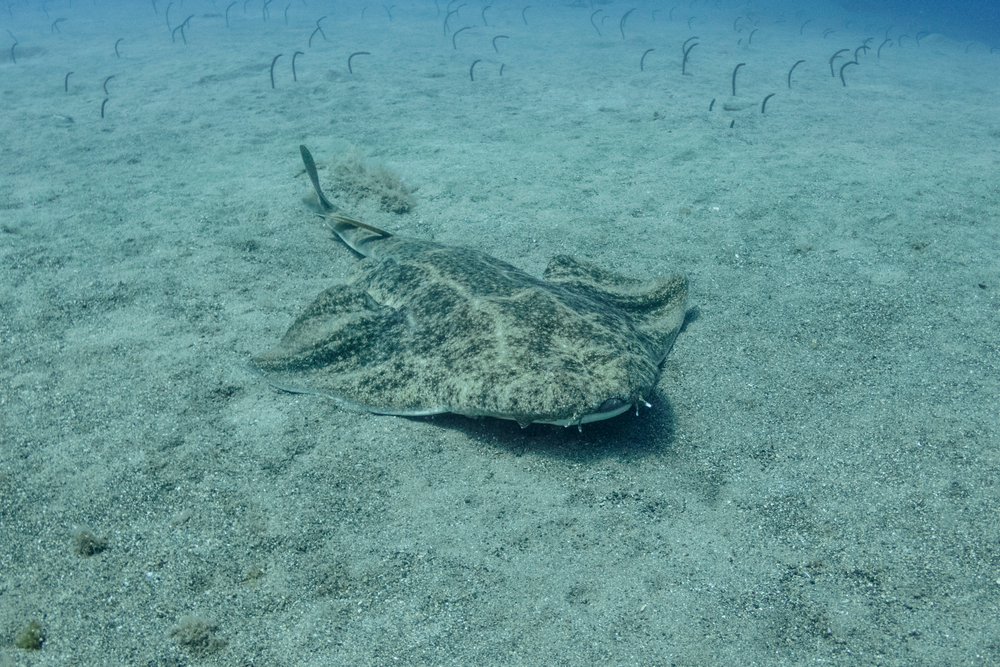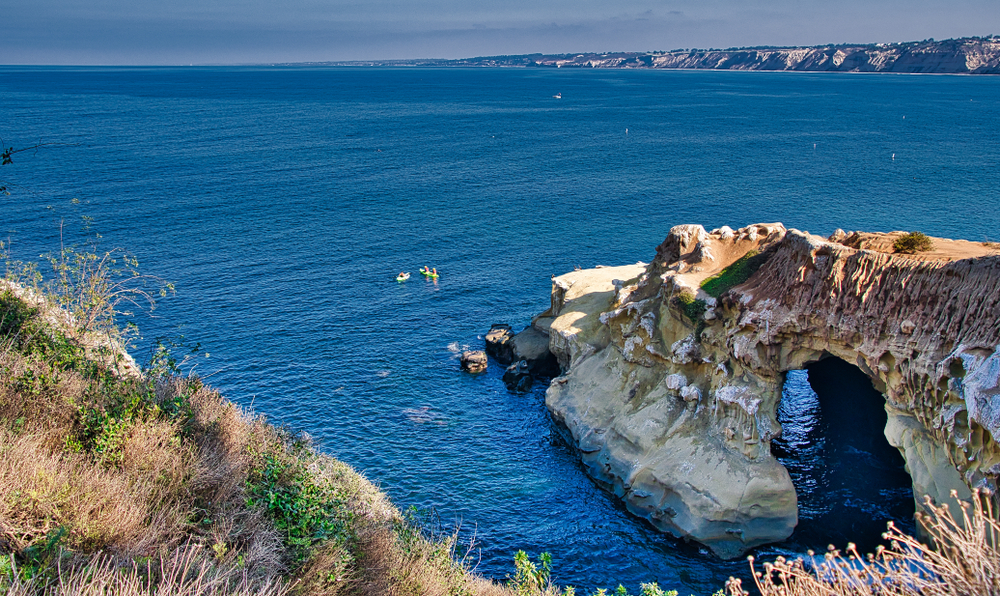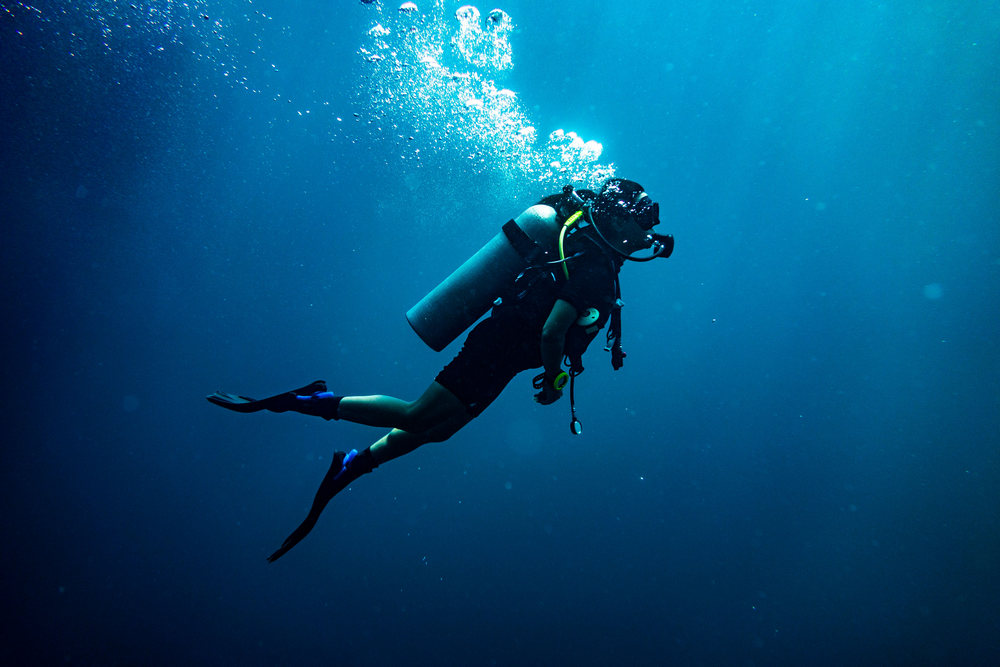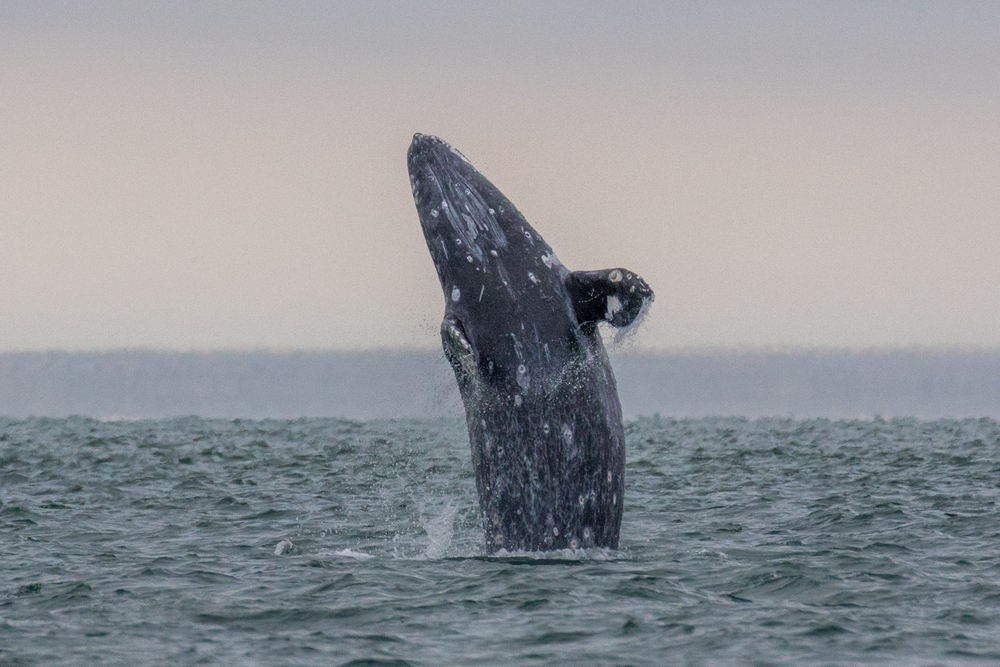Pacific Angel Shark, Squatina California, is occasionally spotted at La Jolla Shores Canyon during a night dive. The encounters with angel sharks are a rare experience while diving in the area.
Physical Traits
These sharks are flat with extremely large pectoral fins. At first sight they look more like rays than sharks, but that’s before you notice their typical sharp shark teeth. They are sandy-gray, speckled and often found on or near the ocean floor. Angel sharks may grow to over five feet in length. They are often hard to spot because they are hiding in the sand while waiting for prey.
Pacific angel sharks are ambush predators, burying their flat bodies in sand or mud on the seafloor as they wait for prey fish or crustaceans to get close enough for them to strike. Although they have excellent camouflage, with skin coloration that blends in almost perfectly with the ocean floor, divers can see them if they know what to look for. An easy way to spot them is the eyes, which are located on top of the head and typically are not buried in the sand. Divers should be cautious, however, although angel sharks are not responsible for any unprovoked bites, they are capable of a very painful bite if disturbed.
Fisheries
This shark is targeted directly and is captured in fisheries targeting other species. It is currently being overfished, and scientists consider it to be near threatened with extinction. Several other species of angel shark are worse off, considered either endangered (highly vulnerable to extinction) or critically endangered (very highly vulnerable to extinction). The group, in general, is now one of the most at-risk groups of sharks on the planet. Without careful management of the human activities that affect these interesting, flat sharks, populations may continue to decline, perhaps to a species-threatening degree.
Interesting Facts:
-They’re also called monkfish or sand devils
-While commonly fished off California in the 1980s and 1990s, the state’s ban on gill-net fishing in coastal waters has helped the population recover. They are still fished in Mexico and South America.
-Pacific angel sharks might lie in wait for their prey for days at a time.
-Although they look like skates or rays, angel sharks are true sharks: a ray’s pectoral fins are indistinguishable from its head, but angel shark pectoral fins are clearly separated.
If you have any questions or if you want to learn more about available training courses. Make online reservations here https://tridentdiver.com/shop/ or call (619) 415-9426








